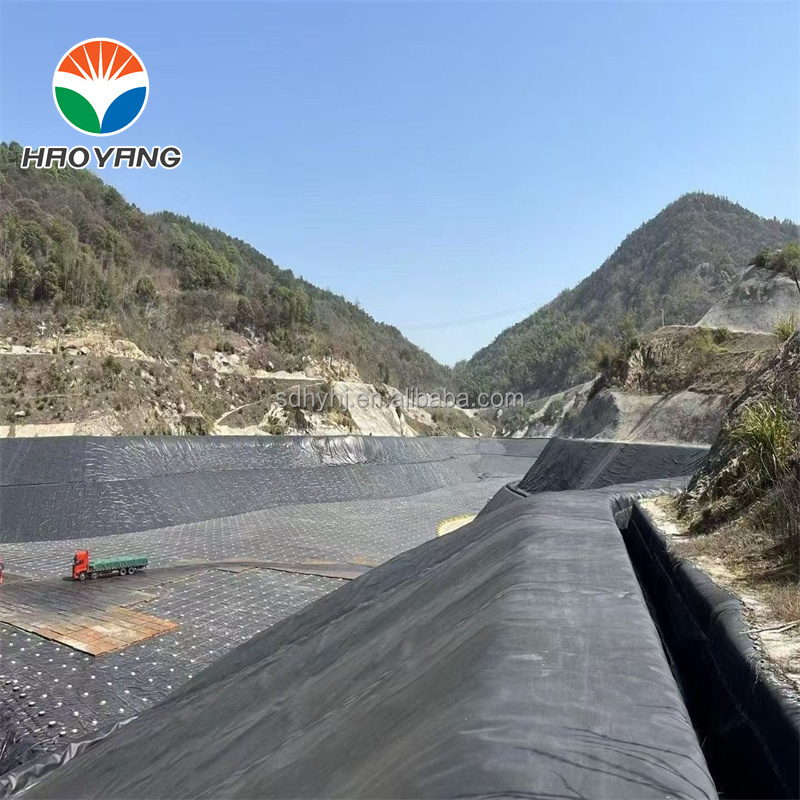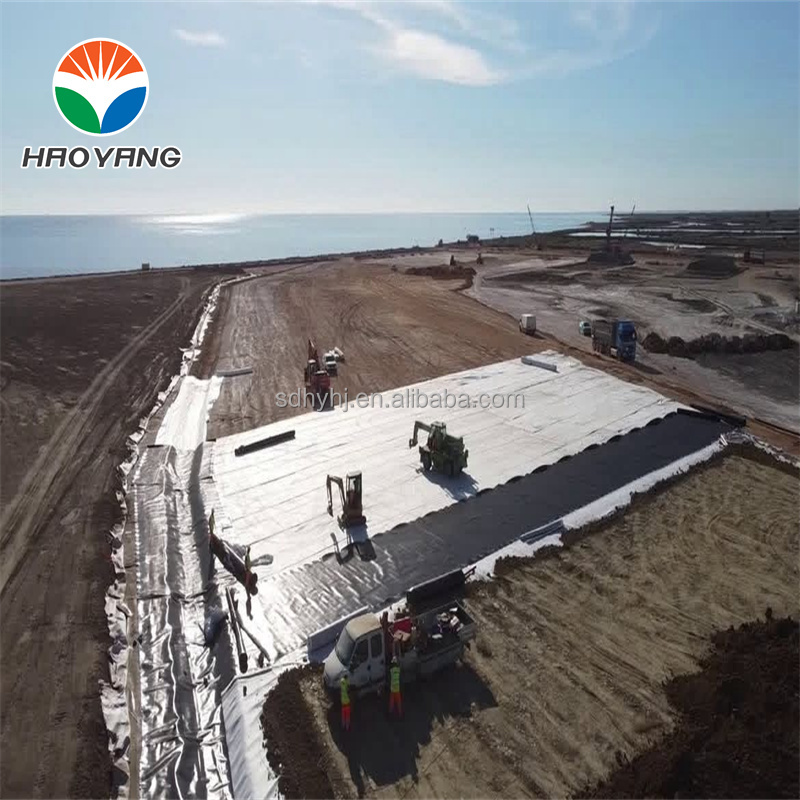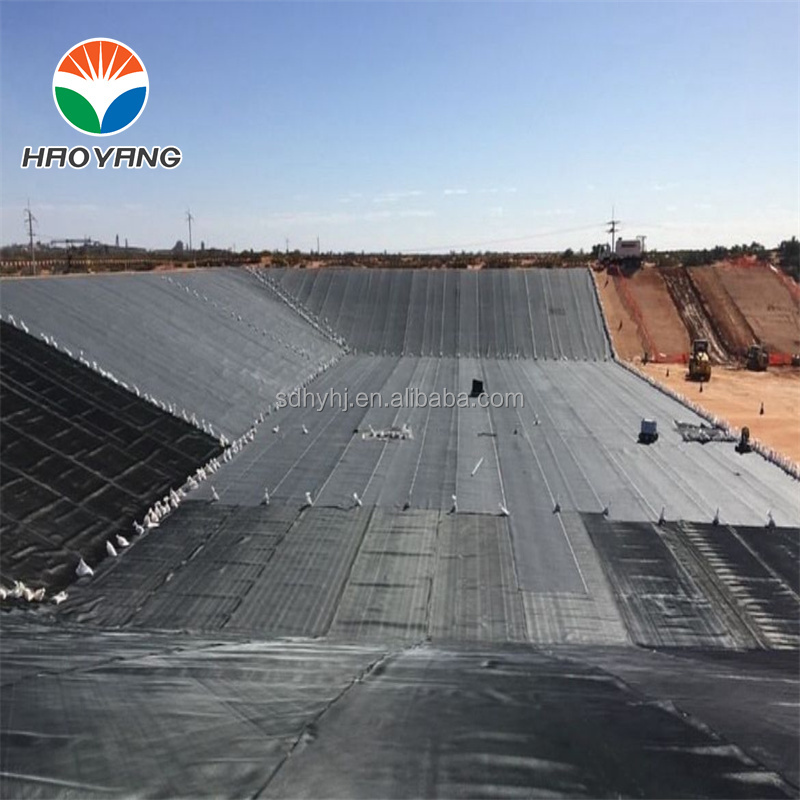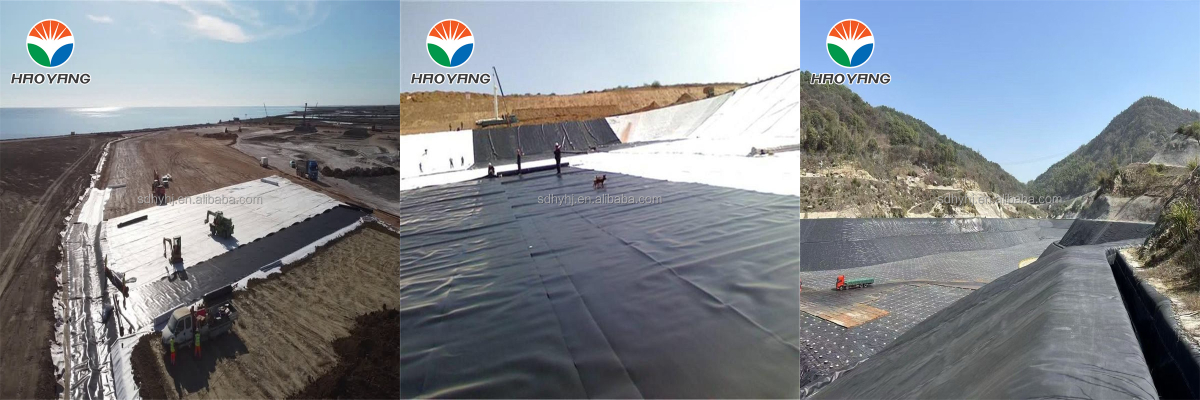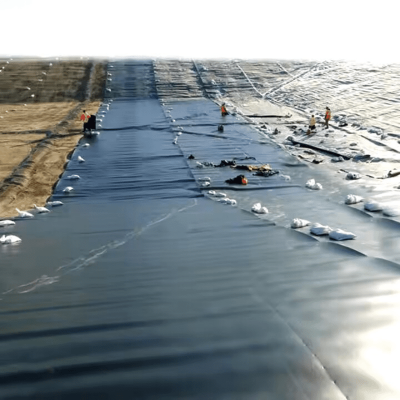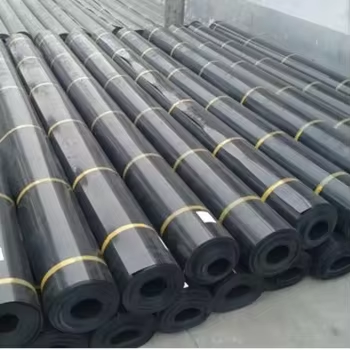Waterproof 1.5mm HDPE Geomembrane
1.Cost-Effective Installation: Lighter weight reduces transportation and labor costs, with savings up to 30% compared to thicker liners.
2.Enhanced Flexibility: Easier handling in complex geometries, such as uneven terrain or curved structures.
3.Sustainability: Lower material consumption reduces carbon footprint, aligning with green construction practices.
Waterproof 1.5mm HDPE Geomembrane: Innovation in Modern Containment Systems
Introduction
High-Density Polyethylene (HDPE) geomembranes have become indispensable in global infrastructure projects, offering robust solutions for waterproofing, containment, and environmental protection. The 1.5mm HDPE geomembrane represents a lighter, more flexible alternative to thicker variants, catering to applications where weight, cost, and ease of installation are critical. This article explores the technical attributes, manufacturing processes, and diverse applications of 1.5mm HDPE geomembranes, supported by data-driven insights and real-world performance metrics.
Technical Specifications of 1.5mm HDPE Geomembrane
The 1.5mm HDPE geomembrane is engineered to balance thinness with durability. Key parameters are outlined below:
| Property | Specification | ASTM Standard |
Thickness | 1.5 mm ± 0.1 mm | D5199 |
Density | 0.940–0.960 g/cm³ | D4718 |
Tensile Strength (MD/TD) | ≥ 20 MPa / ≥ 18 MPa | D6693 |
Elongation at Break | ≥ 500% | D6693 |
Carbon Black Content | 2–3% | D1646 |
UV Resistance | > 85% Retention | D5338 |
Puncture Resistance | ≥ 300 N | D4833 |
Table 1: Technical Parameters of 1.5mm HDPE Geomembrane
Despite its reduced thickness, the material maintains high tensile strength and puncture resistance, making it suitable for moderate-stress environments.
Manufacturing Process and Quality Assurance
The production of 1.5mm HDPE geomembranes involves precision extrusion:
Resin Blending: HDPE resin is mixed with carbon black and stabilizers.
Extrusion: The blend is melted and extruded into sheets at controlled temperatures.
Cooling and Winding: Sheets are cooled and wound into rolls for transportation.
Quality control includes:
Thickness Monitoring: Ultrasonic sensors ensure uniformity.
Seam Testing: Fusion seams undergo air pressure tests.
Aging Simulation: Samples are exposed to UV and thermal cycles to predict lifespan.
Certifications such as ISO 14001 and GRI-GM17 validate environmental and performance standards.
Applications Across Industries
1. Environmental Engineering
In landfills and wastewater ponds, 1.5mm HDPE liners provide cost-effective containment. A 2023 project in Brazil used 1.5mm geomembranes to line a 30-acre leachate pond, reducing installation time by 25% compared to thicker liners.
2. Aquaculture
Fish and shrimp farms benefit from the material’s flexibility. A study in Indonesia’s Java Sea reported a 30% increase in pond lifespan after switching to 1.5mm HDPE liners, with zero seepage over three years.
3. Decorative Ponds and Water Features
The lightweight nature of 1.5mm HDPE makes it ideal for ornamental applications. A residential project in Arizona utilized the material for a 5,000 m² decorative lake, achieving a 50% cost saving versus concrete alternatives.
4. Temporary Containment
In disaster relief, 1.5mm HDPE geomembranes are deployed for emergency water storage. The table below compares performance in temporary vs. permanent installations:
| Project Type | Area (m²) | Installation Time (Days) | Lifespan (Years) |
Temporary Flood Barrier | 10,000 | 3 | 1–2 |
Permanent Reservoir | 50,000 | 15 | 20+ |
Table 2: Performance Metrics in Temporary vs. Permanent Applications
Conclusion
The 1.5mm HDPE geomembrane exemplifies innovation in containment technology, offering a versatile, efficient, and sustainable solution for modern engineering challenges. Its adaptability across industries—from environmental protection to decorative landscaping—underscores its value in both temporary and permanent applications. As global demand for resource-efficient materials grows, the 1.5mm HDPE geomembrane is poised to play a pivotal role in advancing sustainable infrastructure.


